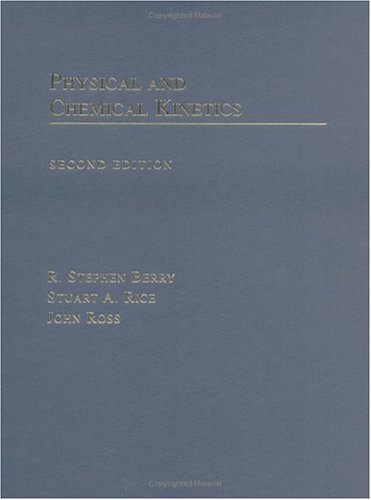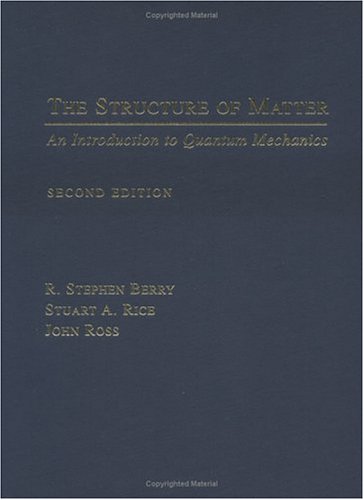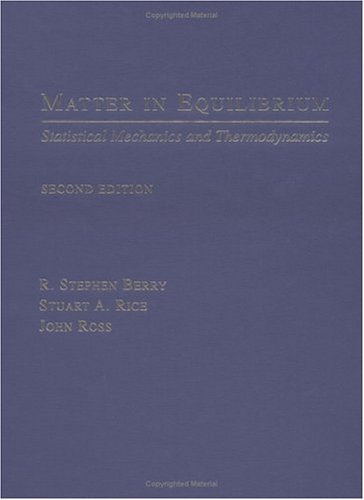Topics in Physical Chemistry
3 total works
Physical and Chemical Kinetics
by R. Stephen Berry, Stuart A. Rice, and John Ross
Published 18 October 2001
Physical and Chemical Kinetics concludes the three-volume set of Physical Chemistry, Second Edition, by R. Stephen Berry, Stuart A. Rice, and John Ross (OUP 2000). With the same precision and efficiency as the other two volumes, Physical and Chemical Kinetics discusses the elements of physical and chemical kinetics and presents advanced discussions of unimolecular reactions, kinetics of photochemically induced reactions, chain reactions, nonlinear phenomena, fluctuations in chemical kinetics, symmetry rules for chemical reactions, catalysis, and the kinetics of electrode reactions. Up-to-date and thorough, this valuable reference provides the cutting-edge information and theory that today's students and researchers need to understand past scientific accomplishments as well as to make future contributions to the field of physical chemistry.
"The Structure of Matter: An Introduction to Quantum Mechanics" originates from the first part of "Physical Chemistry, Second Edition", by R. Stephen Berry, Stuart A. Rice, and John Ross (OUP 2000). Published now as a separate volume, "The Structure of Matter" is designed for introductory quantum mechanics courses at the advanced undergraduate and beginning graduate level. Based on a framework of molecular structure and the theory of quantum mechanics, it discusses the nature and behavior of molecules, starting with the simplest atom (hydrogen), and progressing to two-electron atoms, complex diatomic molecules, larger molecules, and intermolecular forces. In keeping with its parent book, this authoritative text is rigorous, challenging, and offers the most comprehensive treatment available, making it a valuable reference for researching chemists and professionals.
Originally Part II of "Physical Chemistry, Second Edition", and now published as its own volume, "Matter in Equilibrium: Statistical Mechanics and Thermodynamics" simultaneously develops the statistical molecular theory and the classical thermodynamic theory of the bulk properties of matter in a mutually reinforcing fashion. Despite presenting both a microscopic and macroscopic approach, this sophisticated text offers a rigorous treatment of classical thermodynamics and allows professors to separate the two theories if desired. Packed with tables, graphs, and figures, it describes the equilibrium properties of bulk matter and develops the tools needed to study gases, solids, liquids, phase transformations, solutions of non electrolytes, and solutions of electrolytes. The book makes extensive use of computer simulations of molecular behavior and, where appropriate, uses experimental data to illustrate concepts and principles. Ideal for advanced undergraduate and beginning graduate level courses, "Matter in Equilibrium" broadens and challenges student perspectives while offering valuable information to researchers.


